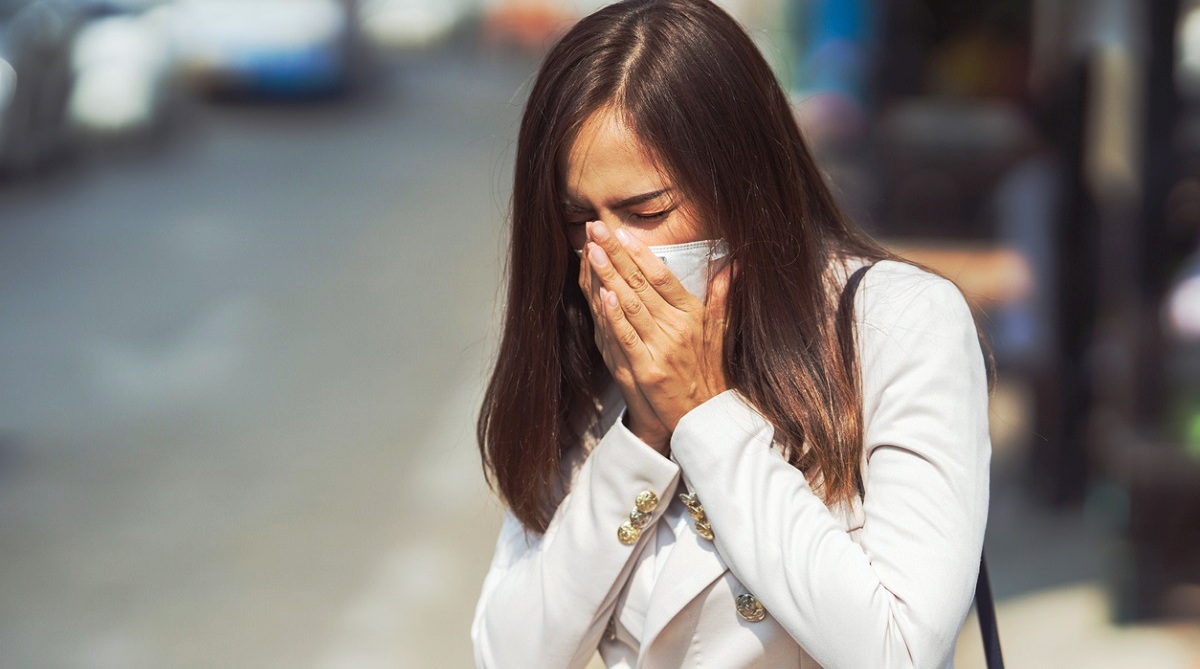75 youth from Haryana to participate in the National Youth Festival
Haryana's youth excel wherever they go, and I am confident that our youngsters will secure the top position in the National Youth Festival, says Chief Minister Nayab Singh Saini.
At a glance, the air quality in most of the capital cities in Asean may seem passable but it could get dangerous if all city governments do not pay adequate attention.

Asian woman coughing, wearing N95 mask to prevent PM 2.5 dust and smog. (Image: iStock)
Bangkok choked for weeks last month as smog filled the air while military drones and fire trucks fought to bring pollution under control. Schools closed, people were encouraged to stay indoors while others armed themselves with masks. Meanwhile, the government reached out to citizens to come up with more effective solutions.
Pollution in major Asian cities has become a norm in recent years – so much so that residents, visitors and policy-makers take the situation for granted. But deteriorating health of people and death threatening situations should force us to pay heed to its consequences.
Advertisement
There are thousands of Cambodians working in Bangkok and the toxicity in the air forced the Cambodian embassy to urge its citizens to return to the country and urge those who opted to remain behind, to guard their health.
Advertisement
The complacency is particularly apparent in Bangkok where the pollution level was inflamed by mushrooming condominiums and construction of mass transit systems in the city. This year, as the wind dropped off, the toxic particles in the air exaggerated.
It’s clear that urbanisation of cities in Asean and the rest of Asia has come with incalculable human costs.
New Delhi and Beijing have suffered pollution for long and are taking steps to tackle the issue but people of Asean have read and watched the situation unfold but still have to take effective remedial action.
The countries of the region are far more interconnected. Seasonal fires in Indonesia, due to open-burning of peat has often resulted in smoke spreading to Singapore and Malaysia, making people aware of their connected reality.
But what is happening in Bangkok this year has shocked people in the region, even as they hope it won’t spread to their countries. In terms of air quality, Bangkok now is considered as one of the top 10 polluted cities in the world.
According to Thai media, the amount of fine particulate matter smaller than 2.5 microns (PM2.5) in some areas, especially along the most busy roadside areas, exceeded the safety limit of 185 micrograms per cubic meter (mcg/m3).
PM2.5 readings measure the concentration of tiny particles less than 2.5 mcg/m3 in diameter – or about one-thirtieth the diameter of a human hair – in the air. And long-term exposure to them on a regular basis has been linked to increased risk of death, from complications such as cancer or heart disease.
The norms governing Air Quality index stipulates that air pollution poses little or no risk if the PM2.5 is between 0-50 mcg/m3. However, for some pollutants, there may be moderate health concern for a very small number of people who are unusually sensitive to air pollution between 51- 100 mcg/m3.
It becomes more dangerous if the quality scale moves to between 101- 150 mcg/m3, as people with greater sensitivity can experience health impacts.
In case the air quality worsens to 151-200 mcg/m3, the condition is unhealthy, and humans can start to feel sick and some people might fall ill. Needless to say, Thailand’s charm was lost as people were forced to wear masks. Other Asean capitals should pay heed.
In Hanoi, the Air Quality Index at various air monitoring stations across the capital has recorded dangerously high levels, at sometimes. The PM2.5 concentration in Hanoi recently was 400 mcg/m3 in some areas, particularly along the busy Pham Van Dong Street.
With all the construction going on in Jakarta, it will surely be next on the list. Media in the country has reported that the PM 2.5 in the city’s air throughout 2016 and 2018 was above the ambient air quality standard set by the Jakarta administration of 15 mcg/m3.
In Manila, though some people have shared their concerns about the air quality, the problem is not considered serious yet.
Kuala Lumpur and Singapore figure among the world’s top 100 most liveable cities for Asian expatriates, but there are some experts who warn that air pollution could be an issue in the future.
Likewise, with other Asean cities growing, air quality will be an issue elsewhere in the region too.
Bandar Seri Begawan, the capital of Brunei with some 100,000 population, may not generate any serious pollution, but Phnom Penh, the capital city of Cambodia, Vientiane, the capital city of Lao PDR and Yangon, the commercial capital of Myanmar should make preparations for the future.
The growth trends in Phnom Penh, Vientiane and Yangon are expected to be very high in coming years. According to the Ministry of Environment of Cambodia, the PM 2.5 rate in Phnom Penh is 35.36 mcg/m3. However, the city already has 1.5 million permanent residents, and construction sites can be found across the city, while the number of vehicles has increased every year – a situation not dissimilar from Vientiane and Yangon.
At a glance, the air quality in most of the capital cities in Asean may seem passable but it could get dangerous, if all city governments do not pay adequate attention.
An integrated approach to tackle air pollution issue is needed. And a regional mechanism established in all Asean capitals first, to deal with the issue.
(The writer is an assistant to the Editor-in-Chief, Rasmei Kampuchea Daily. The Asian Writers’ Circle is a series of columns on global affairs written by top editors and writers from members of the Asia News Network and published in newspapers and websites across the region)
Advertisement